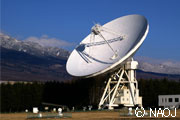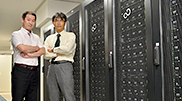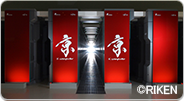Archived content
NOTE: this is an archived page and the content is likely to be out of date.
Nobeyama Radio Observatory
Challenge – Bring insights from the world's largest telescope to a wider audience

The Observatory wanted to support researchers and scientists more effectively by improving data sharing capabilities. It felt an open-source environment would be the best way to do this. It also wanted to increase performance during peak observation periods. Enhancements in image processing and increasingly sophisticated analysis technologies meant that Nobeyama had to handle an ever-growing data stream. It was keen to leverage the benefits of load sharing to manage data traffic efficiently. The Observatory therefore decided to review its entire system architecture.
Solution – Open-source platform from Fujitsu
The Observatory decided to migrate its large-scale image processing system from UNIX to an open-source Linux platform on PRIMERGY servers supporting load balancing. The Observatory also asked Fujitsu to build a cost-effective storage system based on an ETERNUS 2000 disk array solution. In addition, Fujitsu developed the real-time correlator to receive signals from the antenna.
The decision to partner with Fujitsu was the next logical step in a 30-year history of successful joint observation control and astronomical projects. Fujitsu was able to leverage the insights and integration expertise it has gained from projects such as Subaru, ALMA and VERA to optimize the design and cost efficiencies of the Nobeyama project.
Benefits – Proven partner for astronomy projects
The new architecture gives the Observatory maximum return on investment, ensuring stable operation with minimum observation downtime. The LINUX on PRIMERGY platform has considerably improved performance, reducing analysis windows by 90%. In addition, the ETERNUS 2000 storage system has guaranteed the accessibility and integrity of the enormous library of observation data generated by the telescope.
Thanks to the improved performance, data sharing capabilities and increased connectivity of the new environment, it is already delivering a range of benefits to university researchers.


